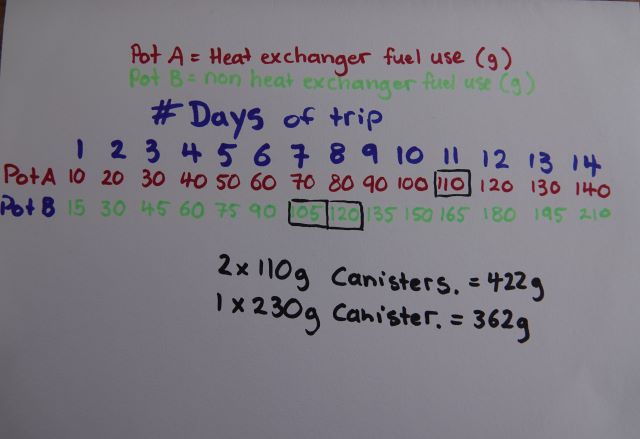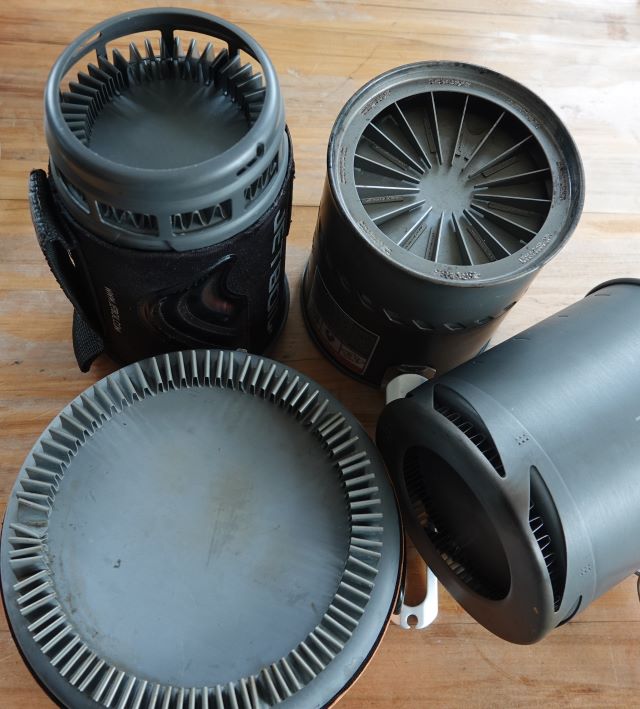Welcome guest, is this your first visit? Create Account now to join.
Welcome to the NZ Hunting and Shooting Forums.
Search Forums
User Tag List
+ Reply to Thread
Results 31 to 45 of 55
Thread: All about gas stoves.
-
12-04-2020, 08:43 PM #31Member

- Join Date
- Jan 2020
- Location
- porirua
- Posts
- 858
-
-
12-04-2020, 09:21 PM #32Member

- Join Date
- Jul 2012
- Location
- Invervegas
- Posts
- 5,722
Ha - I was in 31B battery in the early 80's . . . both the hex tablets and M101a1's are familiar! (sorry about the thread hijack) I still get a tingle thinking about pulling the lanyard on an anti-tank shell . . .
-
12-04-2020, 09:39 PM #33Member

- Join Date
- Jan 2020
- Location
- porirua
- Posts
- 858
-
12-04-2020, 09:49 PM #34
I'll add more to this thread when I can so if we could keep the off topic chat over in the 'Off topic' section it'd be appreciated.

Coming up - Heat exchanger pots. Emporer's new clothes or worthwhile?Last edited by K95; 12-04-2020 at 09:54 PM.
-
12-04-2020, 10:41 PM #35
-
13-04-2020, 09:48 AM #36
Went from the original MSR Whisperlite Int which I used for 10 years back to a gas stove upright due to not being able to simmer on the MSR. Now thinking of going back to a multi fuel stove. Great thread though please keep it going.
-
13-04-2020, 04:43 PM #37
I'm going to hospital pass the heat exchanger theory over to this fellow (Who is an actual stove designer) : https://youtu.be/EvWrxG30sNc
Have a listen to what he says about the heat exchanger (HE) pot in particular. So HE's are more efficient then? Well, yes and no. The reason that particular stove is very efficient is because it's a total system. It's built to remove other factors which come into play like wind and falling canister pressure it also burns incredibly hot because of the 100% primary air system. As he says, it's crankin'.
I can tell you with all other things being equal, that a HE pot will boil water faster and use less fuel than a non-HE pot but there are other factors at play that effect us hunters.
Take a look at this chart I've drawn. If both people start off a 14 day trip with a 230gm canister the person with the non-HE pot is actually carrying less weight the entire trip (but taking a few minutes longer to boil water each time). If we wanted to do a 11 day trip however the person with the HE pot only needs to carry a 110g canister which net weighs 211g and the non-HE person has to carry a 230g canister which net weighs 362g to be able to complete the trip because otherwise he'd run out of gas on the morning of the 8th day (I screwed up and drew around day 7 first).

So HE pots themselves show the most benefit for trips around that 9-11 days duration. Keep it in perspective though, If "Pot A" person slips and gets his boot full of water on the walk in he's lost all advantage he had! That's how small the advantage is in the scheme of things.
The reason you'll see HE on a lot of the stoves now is because they're designed as a complete system as I said earlier and as a system they're very efficient. They aren't selling you magic beans. The HE does work. What most people want nowadays is water to boil fast. HE's achieve that.
Some points to remember when dealing with heat exchangers: Not all heat exchangers are created equal (See below picture). Not all stoves sold with HE pots are created equal and may not even operate with the same principles ( Jetboil vs Reactor). Weight matters to hunters. The length of trip you're doing matters.
Overall effiency depends largely on how you use your stove (blocking wind, using the correct level of output etc). How fast water boils is not necessarily a measure of effiency.
Different types of HE pots:

-
15-04-2020, 11:31 AM #38
Great thread @K95 , how much water are you allowing per day to boil with your 10g per day allowance ?
-
15-04-2020, 11:48 AM #39Member

- Join Date
- Aug 2018
- Location
- Tauranga
- Posts
- 39
Great thread and good accurate information
-
15-04-2020, 12:14 PM #40
Hopefully I've explained it in a semi-intuitive way that people can use and actually apply it to their individual situation. I'm ommited a fair bit around the gas pressures which for our purposes would have just confused the situation for no benefit.
@Lucky 10g was a number I pulled from thin air. The fuel used to water boiled ratio is going to depend on the conditions such as initial water temperature, wind, gas temperature and also what output you run the stove at. A lot of stoves are more efficient at lower output.
For the stove I use and average conditions not including mid winter I'd expect 10g to boil me about 0.8L of water.
-
15-04-2020, 12:23 PM #41Member

- Join Date
- Jul 2012
- Location
- Invervegas
- Posts
- 5,722
An interesting thought I found on another forum re heat transfer pots . . . he cut away the fins in places (e.g. if you stove has its pot supports in a tri formation, cut the fins away in the 3 places) so they would fit a cooker that wasn't designed for them, cut down they gave increased efficiency on the non-proprietary stove and very little loss on the one they were designed for . . . wish I'd kept the link.
Opens up the field quite a bit to use finned pots.
-
15-04-2020, 12:25 PM #42
@K95 , fair enough that makes a lot of sense
-
15-04-2020, 12:37 PM #43
It's an interesting thought. It increases efficiency only if you're running the stove at a higher output than what a non-heat exchanger pot can handle. If you run a stove too hard a lot of that heat can't be "captured" by the pot. A heat exchanger provides more surface area to soak that heat up and put it to use. These modern stoves have such high outputs they require a heat exchanger or they would be horrendously inefficient. Fast boil time has become what people rate a stove on hence why they're all going this way.
So with those upright canister stoves you're talking about they could also slow the stove down if efficiency was the only thing they wanted to increase. It's a big game of compromises like everything else in life.
-
15-04-2020, 08:43 PM #44Member

- Join Date
- Mar 2016
- Location
- Wellington
- Posts
- 239
Great thread @K95
Are you going to cover off wind proof heat exchange pots?
Cheers Cliff
-
15-04-2020, 08:57 PM #45Member

- Join Date
- Feb 2013
- Location
- Mangakino
- Posts
- 1,867
Well written thread learnt quite a bit.
Similar Threads
-
Vargo Ti Triad/Triad Multi-Fuel Stoves
By Nesika in forum Gear and EquipmentReplies: 8Last Post: 10-03-2016, 10:56 PM
Tags for this Thread
Welcome to NZ Hunting and Shooting Forums! We see you're new here, or arn't logged in. Create an account, and Login for full access including our FREE BUY and SELL section Register NOW!!





 67Likes
67Likes LinkBack URL
LinkBack URL About LinkBacks
About LinkBacks
 Anyone who has ever been in the military know all about those little stinking tabs.
Anyone who has ever been in the military know all about those little stinking tabs.



 Reply With Quote
Reply With Quote


Bookmarks